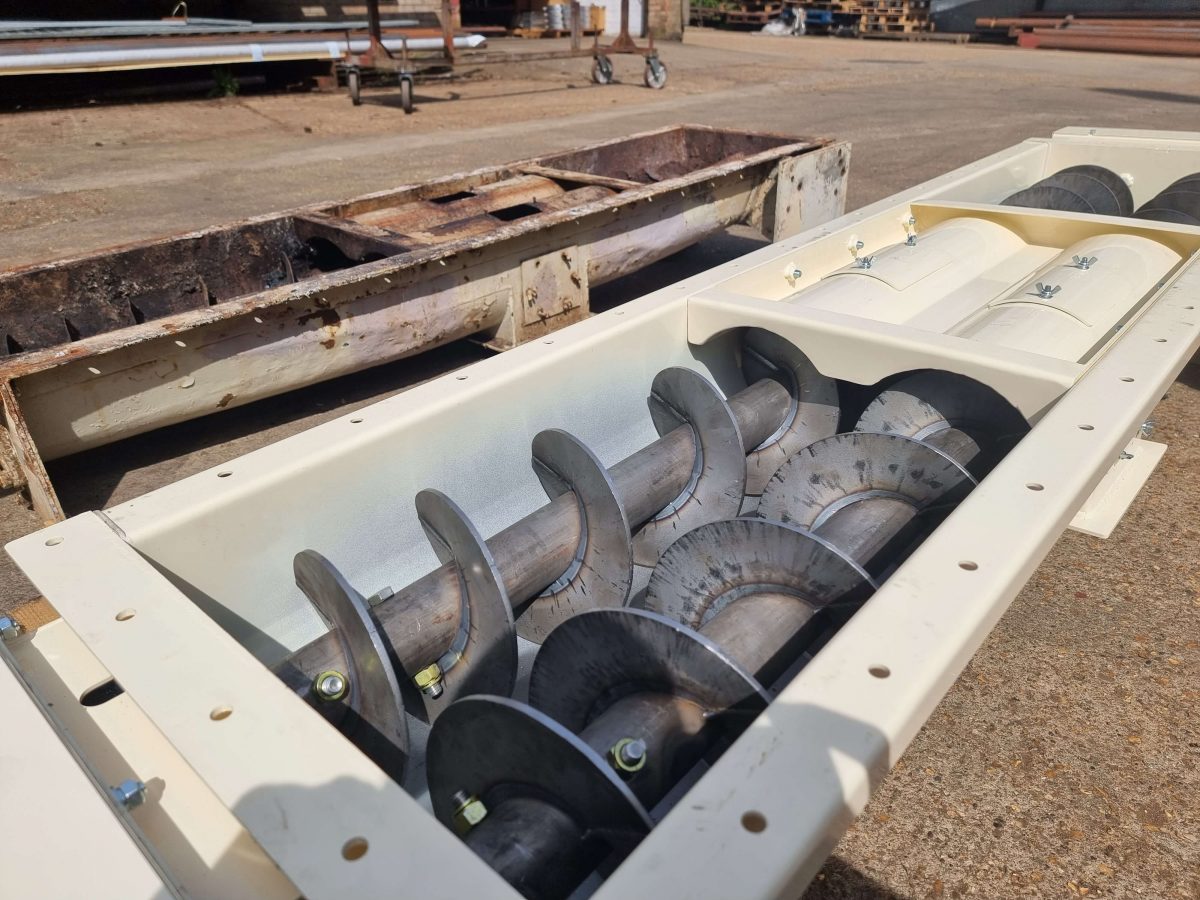The Wrights Dowson Group is one of the leading manufacturers of screw conveyors and other bulk handling equipment in the UK. We work to our customer’s specifications to ensure that our machines perform optimally, no matter which materials you handle.
Where there is a need to manage bulks of complex material, the type of screw conveyor you choose for your application is essential. Screw conveyors can be outfitted with various screws, which rotate around a centre shaft. A centreless screw conveyor gets rid of this central comment. Instead, the material is transported by a centreless spiral screw.
This type of conveyor is sometimes also called a Shaftless Screw Conveyor.
How Does a Centreless Screw Conveyor Operate?
Most screw conveyors feature a shaft around which the screw turns, and the material is easily compartmentalised between the blades. This almost seems a core component of the machine’s operation, but centreless screw conveyors are perfectly functional.
When the material to be transported presents difficulties, such as being thick and sticky, a shaft can act to your detriment. For example, the material might cling to the shaft and start clogging up the conveyor. In addition, an uneven product might get stuck, with pieces wedged between the shaft and blades.
A centreless screw conveyor removes this central obstacle and allows you to move products that are:
- Free-flowing, such as chemicals, ash or powder
- Large particles, like wood chips
- Of mixed sizes, such as wood, paper and biomass
- Abrasive, such as cinder, asphalt, aggregate, gravel and sand
- Wet or sticky, such as sewage, sludge and general waste
Pros of Shaftless Screw Conveyors
- Ability to handle different materials, including sticky, wet and lumpy materials.
- No need for hanger bearings. A shaftless conveyor can have a higher fill rate as there is more space in the conveyor.
- Ideal for pulling vertical conveyors. There is no bottom shaft or seal.
- It can be fashioned from anti-abrasive materials, food-grade stainless steel, and more.
Cons of Shaftless Screw Conveyors
- The liner of a centreless screw conveyor will need to be removed and replaced, as this item can wear down. This is especially an issue if the screw conveyor is located somewhere high or in a tighter location.
- If you run long, high-volume applications, you need to reinforce the screw. Without the centre shaft, it will compress under pushing load more easily or elongate under pulling load.
Discuss Your Application with The Wrights Dowson Group Today
If you’re still unsure which type of screw conveyor is right for your material and business, chat with us at the Wrights Dowson Group today. Our helpful engineers ensure that each item is fashioned to your specifications and meets your plant’s needs. For example, we can advise whether your material is better suited to a shafted or centreless screw conveyor.









